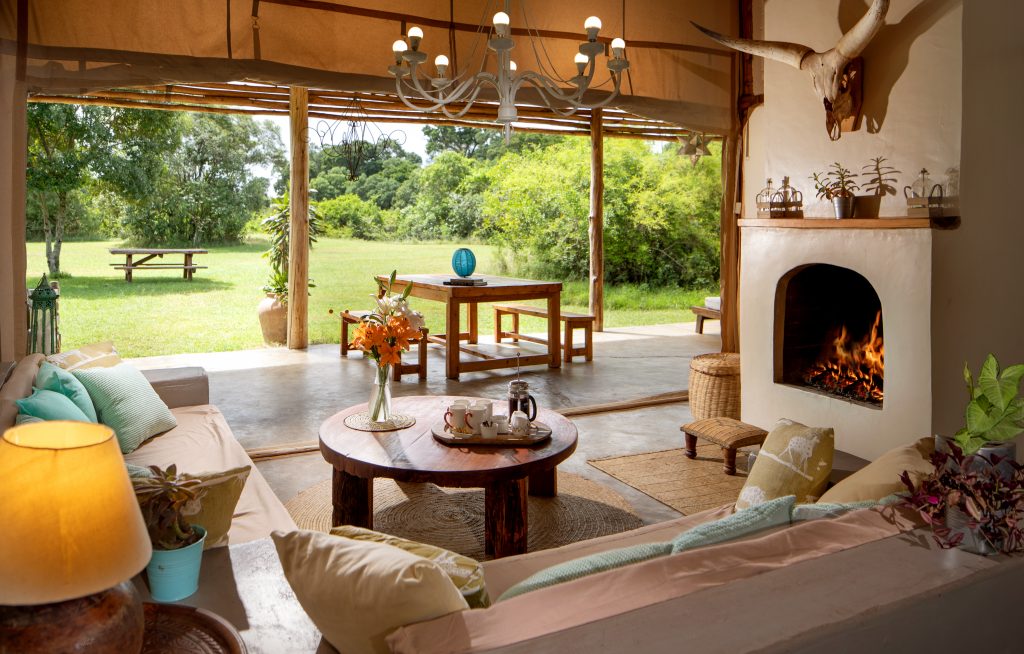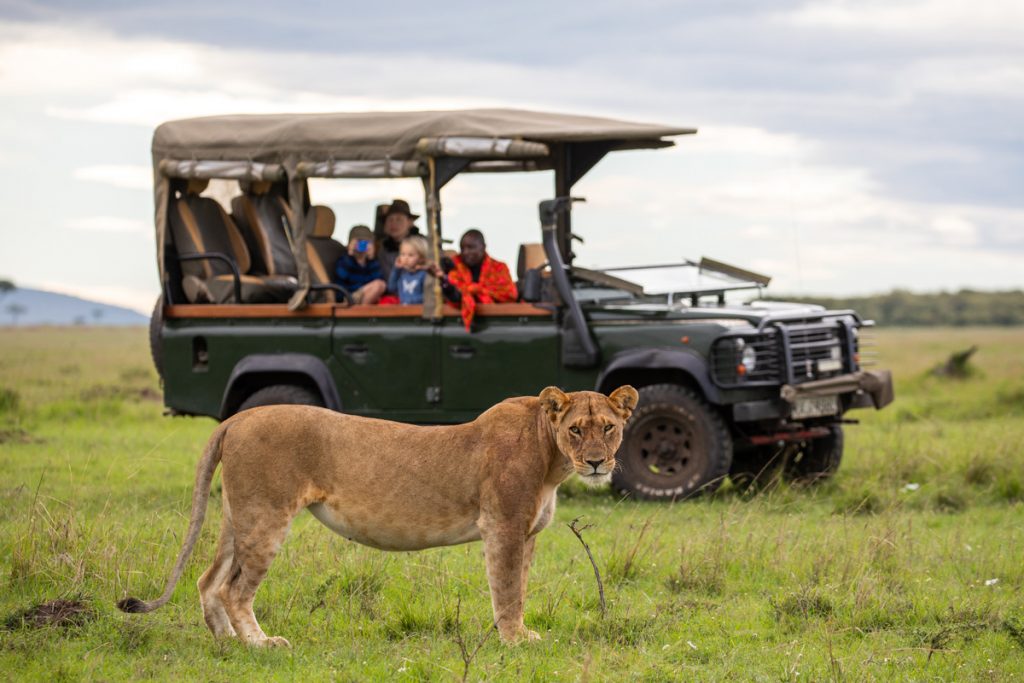Behind the Green is all about giving you more insight into the places we feature. Our interviews reveal what happens behind the scenes, tells the stories of the people on the ground, exposes the challenges they face, as well as the communities they impact; essentially the bits you don’t usually hear.
Meet Lippa one of the owners of House in the Wild. She was born into a family of vets, she moved to Kenya aged 6 and studied at Edinburgh University where she met her husband who runs the lodge alongside her. She loves nothing more than being creative and designing things.

When did you decide that House in the Wild would be a project you would embark on?
“My now husband’s father owned a commercial farm in Kenya in which we worked at as newlyweds. There were crop problems and other reasons meant that he decided to sell. Me and my husband knew deep down that the commercial farming was not the future here and that the opportunity was in a ‘rewilding’ project so we decided to take a leap of faith. We got an investor on-board and took a loan to make it happen.
One of the biggest challenges was the huge overgrazing on the land. The farming had used pesticides which meant no insects, which results in less birds and it was not uncommon to hear of lions being chased away, elephants speared and so on. We wanted to turn this around. We were on a mission to show the community that they could generate income from the wildlife and that there was a way to make their cattle work with the lions. We worked to bring all the cows into one herd, letting them graze in sections just like a pizza cut into sections. This approach resulted in just 30% cover of the lands to having 70% cover.”
What is the best part of doing what you do?
“House in the Wild is a passion project, we love the land, community and wildlife. It is wonderful to have our 3 children growing up in such an incredible place. The best part is seeing local people that we employ starting raw and seeing a talent they didn’t know they had emerge. For example, we employed someone who had never stepped foot in a kitchen to which we quickly realised what a talent they had with food, and they are now an incredible chef!.”
What is life like for your children growing up here?
“They get to grow up immersed in nature, they love to get involved at the lodge; they are like mini hosts, one of my kids passes out the snacks to guests on arrival. One of my girls wants to be a ranger when she grows up, she is inspired by what she sees. There are not many options for education so we didn’t have a choice but to put them in boarding school which is hard, although we do see them every weekend.”
Where do you see the biggest area for improvement in being greener at House in the Wild?
“There is no one thing as it is a forever growing list, we are always thinking of what we can do next and sometimes they are little things. I have all sorts on my mind from melting down all the leftover wax from the candles to make more candles, to further reducing waste. We are considering making our own soaps, and we would love to get solar powered jeeps, however, we cannot always do everything at once so it is a balancing act. We have just started a tree seedlings nursery which we are really excited about, this was an area we wanted to work on and it is great to see it come to life.”
What are the biggest misconceptions people have before coming to Kenya and a safari lodge like House in the Wild?
“Most people have a barren beige landscape in their mind, they soon realise just how lush and green it really is here. The other thing that some people are taken aback by is just how happy people are despite having very little.”


What in your opinion is the most challenging aspect of running an eco-lodge?
“The fact that we are so remote. It is 6 hour trip to the shops and that is just for the basic stuff, a proper shop is even further which can be up to 2 days especially if the one road which goes into Nairobi is blocked. Running a business with logistics to negotiate like this is a challenge. We also realised that the skills we come to expect from a plumber back in the UK was not quite the same. When we first got set-up we had the hot water plugged into the loo and the cold water into the bath, which wasn’t ideal. Sometimes things take a little longer in that sense.”
What is the best local dish or drink which guests cannot miss when staying at House in the Wild?
“Where do I start? Last night we served tapas around the fire which was inspired by a Moroccan and Greek fusion. The Swahili fish is delicious, this is a Kenyan speciality with coconut, lime, ginger, and lemon. We also serve Dawa Cocktails which are made from honey from our local beehives, it is also made with vodka and lime. We also surprise guests with a bush breakfast which includes local doughnuts with cinnamon.”
What’s next for House in the Wild?
“We are looking to add a couple more rooms, however, we have committed to cap it at 20 rooms to ensure we keep the authentic, intimate experience and to be conscious of our impact. We are also putting a mini spa in at the lodge so guests can relax with a massage from our fantastic beautician. We are broadening activities to include ‘fly camping’ which is where we take guests to the highest point on a hill and camp out under the stars. We first started doing this as a family and decided it was just too good to keep away from our guests.”

